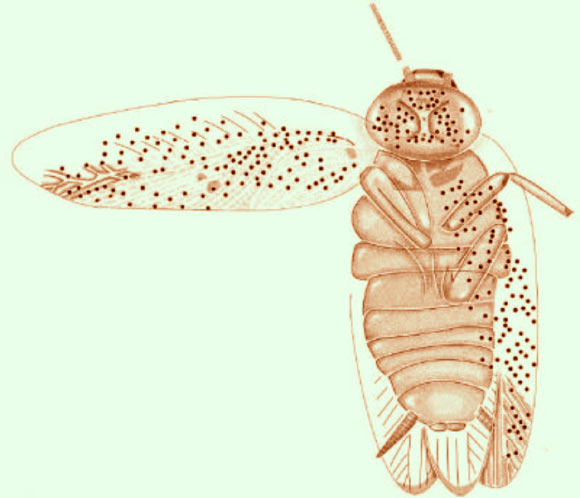An international team of paleontologists has reported the important discovery of a new fossil species in the cockroach genus Ectobius.

The Dusky cockroach (Ectobius lapponicus) is a member of the genus Ectobius. Image credit: Adam Opioła / CC BY-SA 3.0.
Ectobius is an extant genus of cockroaches (family Blattellidae, subfamily Ectobiinae) inhabiting Europe, the Eastern Palearctic ecozone and the Near East.
These cockroaches first appeared in the fossil record in Europe around 44 million years old. The lineage was believed to have been exclusively from the Old World.
However, the newly discovered fossil species, named Ectobius kohlsi, has uprooted that view.
In fact, it now appears that Ectobius cockroaches may have originated in North America.
The paleontologists have discovered Ectobius kohlsi and three undetermined species in the 49-million-year-old Green River Formation near Rifle, Colorado in deposits that are about 5 million years older than the oldest European specimens.
However, these cockroaches soon became extinct in North America. The cause for the extinction of Ectobius in North America in the dim past is unknown, but it evidently survived in the Old World, and western Europe in particular.

This is an artist’s impression of Ectobius kohlsi. Image credit: Peter Vršanský.
In many ways the history of Ectobius mirrors that of the biogeographic history of the horse. Horses occurred in the New World and became extinct during the late Pleistocene ecological crisis. Horses, attached to human habitation, were subsequently introduced to North America by early Spanish explorers about 11,000 years after their demise.
Ectobius kohlsi “is named after David Kohls, who lives near Rifle, Colorado and has been an indefatigable collector of fossil insects and plants from the nearby Green River Formation. His collection of approximately 150,000 insects from 31,000 slabs of shale now constitutes the Kohls Green River Fossil Insect Collection, which is housed in the Smithsonian’s Department of Paleobiology,” explained Dr Conrad Labandeira of the Smithsonian Institution’s National Museum of Natural History, who is the senior author of the paper published in the Annals of the Entomological Society of America.
______
Vršanský P et al. 2014. Native Ectobius (Blattaria: Ectobiidae) From the Early Eocene Green River Formation of Colorado and Its Reintroduction to North America 49 Million Years Later. Annals of the Entomological Society of America, vol. 107, no. 1, pp. 28-36 (9); doi: 10.1603/AN13042







